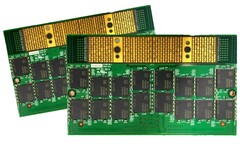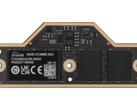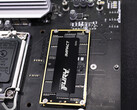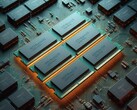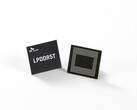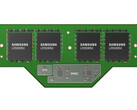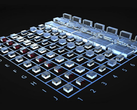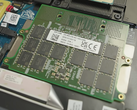JEDEC recently announced that the draft specs for the DDR6 RAM standard are to be released sometime this year, with the 1.0 specs scheduled for Q2 2025. As expected, the transfer speeds will double the current DDR5 rates or almost triple when overclocing is factored in, but the more important aspect mentioned in the initial draft outline released by Synonpsys is that DDR6 as well as LPDDR6 will move from the current SO-DIMM form-factor to the new CAMM2 form-factor already adopted by Micron, Samsung and SK Hynix.
Initially, DDR6 RAM modules will feature 8.8 Gbps speeds, and, as the standard matures, speeds could double to 17.6 Gbps. Synonpsys claims that speeds could be pushed to 21 Gbps, most likely through overclocking methods. JEDEC has not yet decided what signaling standard to adopt for DDR6. The current PAM (pulse-amplitude modulation) standard does not seem to provide stable enough speeds, so JEDEC is considering the NRZ (non-return to zero) standard as a solution.
Unfortunately, LPDDR6 (for mobile devices including thin notebooks) will not benefit from the maximum speeds possible on DDR6. Instead, it will cap out at 14.4 Gbps, but will start out higher than DDR6 at 10.66 Gbps. JEDEC aims for a 32 GB/s introductory LPDDR6 bandwidth
Both standards are now expected to come in the CAMM2 form-factor, which should reduce power requirements, decrease motherboard complexity and overall offer better upgradability through even larger capacities. A desktop PC CAMM2 RAM module would connect to the motherboard in a horizontal orientation (parallel to the mobo) instead of vertically (perpendicular to the mobo), similar to how DDR modules connect to laptop motherboards. Moreover, CAMM2 removes the need for a soldered connector and moves the topology entirely on the RAM module, enabling faster speeds and increased capacities. This modification will require a redesign for the current standard motherboard layout. For laptops, however, this means that LPDDR6 modules could easily be replaced and upgraded.
If all goes according to plan, the first mass-produced DDR6 and LPDDR6 CAMM2 modules could launch by 2026, but they will prompt desktop mobo makers and to some degree laptop mobo makers to adopt new layouts.
Source(s)
via WCCFTech




